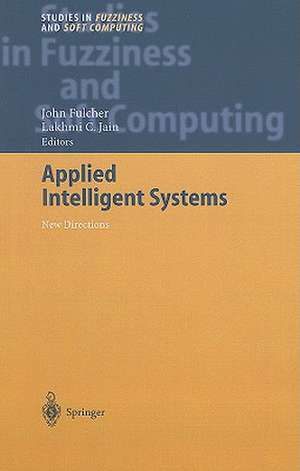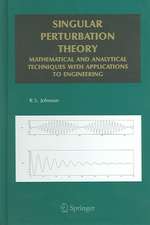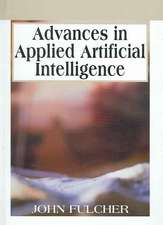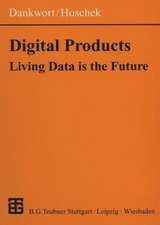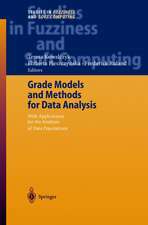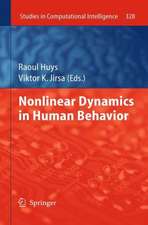Applied Intelligent Systems: New Directions: Studies in Fuzziness and Soft Computing, cartea 153
Editat de John Fulcheren Limba Engleză Hardback – 5 mai 2004
| Toate formatele și edițiile | Preț | Express |
|---|---|---|
| Paperback (1) | 946.72 lei 6-8 săpt. | |
| Springer Berlin, Heidelberg – 7 dec 2010 | 946.72 lei 6-8 săpt. | |
| Hardback (1) | 956.03 lei 6-8 săpt. | |
| Springer Berlin, Heidelberg – 5 mai 2004 | 956.03 lei 6-8 săpt. |
Din seria Studies in Fuzziness and Soft Computing
- 20%
 Preț: 999.85 lei
Preț: 999.85 lei - 20%
 Preț: 653.06 lei
Preț: 653.06 lei - 20%
 Preț: 872.98 lei
Preț: 872.98 lei - 20%
 Preț: 930.57 lei
Preț: 930.57 lei - 20%
 Preț: 1051.00 lei
Preț: 1051.00 lei - 20%
 Preț: 992.44 lei
Preț: 992.44 lei - 20%
 Preț: 655.85 lei
Preț: 655.85 lei - 20%
 Preț: 1001.86 lei
Preț: 1001.86 lei - 18%
 Preț: 954.14 lei
Preț: 954.14 lei - 20%
 Preț: 330.10 lei
Preț: 330.10 lei - 20%
 Preț: 333.04 lei
Preț: 333.04 lei - 20%
 Preț: 997.56 lei
Preț: 997.56 lei -
 Preț: 391.61 lei
Preț: 391.61 lei - 20%
 Preț: 647.79 lei
Preț: 647.79 lei - 20%
 Preț: 986.01 lei
Preț: 986.01 lei - 18%
 Preț: 958.56 lei
Preț: 958.56 lei - 20%
 Preț: 996.40 lei
Preț: 996.40 lei - 20%
 Preț: 999.35 lei
Preț: 999.35 lei - 15%
 Preț: 646.43 lei
Preț: 646.43 lei - 20%
 Preț: 651.57 lei
Preț: 651.57 lei - 20%
 Preț: 997.89 lei
Preț: 997.89 lei - 15%
 Preț: 641.03 lei
Preț: 641.03 lei - 20%
 Preț: 1009.74 lei
Preț: 1009.74 lei - 20%
 Preț: 992.62 lei
Preț: 992.62 lei -
 Preț: 388.72 lei
Preț: 388.72 lei - 18%
 Preț: 1223.43 lei
Preț: 1223.43 lei - 20%
 Preț: 651.42 lei
Preț: 651.42 lei - 18%
 Preț: 951.59 lei
Preț: 951.59 lei - 18%
 Preț: 948.61 lei
Preț: 948.61 lei
Preț: 956.03 lei
Preț vechi: 1165.88 lei
-18% Nou
Puncte Express: 1434
Preț estimativ în valută:
182.96€ • 198.67$ • 153.68£
182.96€ • 198.67$ • 153.68£
Carte tipărită la comandă
Livrare economică 22 aprilie-06 mai
Preluare comenzi: 021 569.72.76
Specificații
ISBN-13: 9783540211532
ISBN-10: 3540211535
Pagini: 348
Ilustrații: XVII, 325 p.
Dimensiuni: 155 x 235 x 27 mm
Greutate: 0.75 kg
Ediția:2004
Editura: Springer Berlin, Heidelberg
Colecția Springer
Seria Studies in Fuzziness and Soft Computing
Locul publicării:Berlin, Heidelberg, Germany
ISBN-10: 3540211535
Pagini: 348
Ilustrații: XVII, 325 p.
Dimensiuni: 155 x 235 x 27 mm
Greutate: 0.75 kg
Ediția:2004
Editura: Springer Berlin, Heidelberg
Colecția Springer
Seria Studies in Fuzziness and Soft Computing
Locul publicării:Berlin, Heidelberg, Germany
Public țintă
ResearchCuprins
1 Adaptive Technical Analysis in the Financial Markets Using Machine Learning: a Statistical View.- 1.1 ‘Technical Analysis’ in Finance: a Brief Background.- 1.2 The ‘Moving Windows’ Paradigm.- 1.3 Post-Hoc Performance Assessment.- 1.4 Genetic programming.- 1.5 Support-Vector Machines.- 1.6 Neural Networks.- 1.7 Discussion.- References.- 2 Higher Order Neural Networks for Satellite Weather Prediction.- 2.1 Introduction.- 2.2 Higher Order Neural Networks.- 2.3 Artificial Neural Network Groups.- 2.4 Weather Forecasting & ANNs.- 2.5 HONN Models for Half-hour Rainfall Prediction.- 2.6 ANSER System for Rainfall Estimation.- 2.7 Summary.- 3 Independent Component Analysis.- 3.1 Introduction.- 3.2 Independent Component Analysis Methods.- 3.3 Applications of ICA.- 3.4 Open Problems for ICA Research.- 3.5 Summary.- References.- Appendix — Selected ICA Resources.- 4 Regulatory Applications of Artificial Intelligence.- 4.1 Introduction.- 4.2 Solution Spaces, Data and Mining.- 4.3 Artificial Intelligence in Context.- 4.4 Anomaly Detection: ANNs for Prediction/Classification.- 4.5 Formulating Expert Systems to Identify Common Events of Interest.- A Note on the Software.- Acknowledgements.- References.- 5 An Introduction to Collective Intelligence.- 5.1 Collective Intelligence.- 5.2 The Power of Collective Action.- 5.3 Optimisation.- 5.4 Ant Colony Optimisation.- 5.5 Particle Swarm Optimisation.- References.- 6 Where are all the Mobile Robots?.- 6.1 Introduction.- 6.2 Commercial Applications.- 6.3 Research Directions.- 6.4 Conclusion.- A Note on the Figures.- References.- 7 Building Intelligent Legal Decision Support Systems: Past Practice and Future Challenges.- 7.1 Introduction.- 7.2 Jurisprudential Principles for Developing Intelligent Legal Knowledge-Based Systems.- 7.3Early Legal Decision Support Systems.- 7.4 Legal Decision Support on the World Wide Web.- 7.5 Conclusion.- Acknowledgements.- References.- 8 Forming Human-Agent Teams within Hostile Environments.- 8.1 Introduction.- 8.2 Background.- 8.3 Cognitive Engineering.- 8.4 Research Challenge.- 8.5 The Research Environment.- 8.6 The Research Application.- 8.7 Demonstration System.- 8.8 Conclusions.- Acknowledgements.- References.- 9 Fuzzy Multivariate Auto-Regression Method and its Application.- 9.1 Introduction.- 9.2 Fuzzy Data Analysis.- 9.3 Fuzzy Multivariate Auto-Regression Algorithm.- 9.4 Experimental Results.- 9.5 Conclusions.- References.- 10 Selective Attention Adaptive Resonance theory and Object Recognition.- 10.1 Introduction.- 10.2 Adaptive Resonance Theory (ART).- 10.3 Selective Attention Adaptive Resonance Theory.- 10.4 Conclusions.- References.
Textul de pe ultima copertă
This carefully edited book presents examples of the successful application of Intelligent Systems techniques to practical problems. The invited contributions, written by international experts in their respective fields, clearly demonstrate what can be achieved when AI systems are used to solve real-world problems. The book covers the field of applied intelligent systems with a broad and deep selection of topics, such as object recognition, robotics, satellite weather prediction, or economics with an industrial focus. This book will be of interest to researchers interested in applied intelligent systems/AI, as well as to engineers and programmers in industry.
Caracteristici
Provides practical examples of successful applications of Intelligent Systems to real world problems Includes supplementary material: sn.pub/extras
